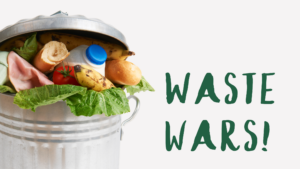When I joined the Deakin University SONIC (Salt and Other Nutrient Intakes in Children) team earlier this year to study children’s salt intake and preferences, I was aware of the health risks of a high salt diet. I also knew that most of the salt we eat is hidden in processed foods. What I didn’t know was that Australian children are eating shockingly high amounts of salt.
SONIC is the first Australian study to use accurate methods to find out how much salt children are really eating. Our early results for 320 government school children aged 5-13 years show that on average they are eating around six grams of salt a day, or four times more salt than they need.
We also found that seven in ten children are eating more than the recommended maximum level of salt. Similar results have been found in 238 independent school children.
With children eating such high levels of salt, they are at risk of serious long-term health problems, such as high blood pressure, which is a major cause of stroke and heart disease. Most people will know someone suffering these conditions and no-one wants this for their children’s future. High salt diets are also linked to childhood obesity, because of greater thirst and sweetened drinks.
Caryl Nowson, Professor of Nutrition and Ageing, who leads the SONIC study, says that these results are a wakeup call for all of us, with salt proving to be a hidden threat to children’s health. “I am certain that most people, and particularly parents, would be surprised to hear that children are eating so much salt,” Professor Nowson said.
Most of the salt children consume is hidden in processed foodlike bread, cheese and breakfast cereals, and it’s often difficult for parents to find healthier alternatives. Low salt products have a sodium level below 120 mg/100g.You can check this on the nutrition information panel on the back of the package. However, processed foods usually have much higher salt (or sodium) levels, and most parents don’t have time to read lots of food labels to look for the lowest salt product.
A free app developed by the George Institute for Global Health allows you to quickly scan products while shopping and gives you a list of lower salt and healthier alternatives. You can influence the type of products companies make by buying lower salt alternatives when these are available.
Part of the problem with eating so much salt is that we get used to it and like the taste of saltier foods. However, if the amount of salt we eat decreases, our liking for salt changes too, and we prefer less salty foods. If salt is reduced gradually we don’t notice the difference. We know this happens in adults, but need to find out more about how salt intake affects salt liking in children. Food tastings of high and lower salt samples of a range of processed foods, such as bread, cereals and sandwich fillings, are being conducted with children as part of the SONIC study.
The SONIC study (funded by the National Heart Foundation) aims to collect data for at least 500 government school children.We would like to hear from primary schools in Melbourne, or parents, interested in participating in 2013.
Parents are provided with their own child’s results, and group results from the study will provide the important evidence needed to inform the government and food industry. Data from the SONIC study will allow better planning for future efforts so we can be more effective in reducing the excessive and harmful amounts of salt Australian children are currently eating.
Schools, or parents, wanting more information on the SONIC study can contact Manuela Rigo at Deakin University on 9244 6380
Facebook: http://www.facebook.com/SONICstudy
Helpful links about reducing salt in children’s diets:
https://www.heartfoundation.org.au/healthy-eating/food-and-nutrition/salt
https://www.heartfoundation.org.au/news/salty-food-is-putting-kids-at-risk-of-heart-disease
What are your tips to reduce salt in your kids diets?




